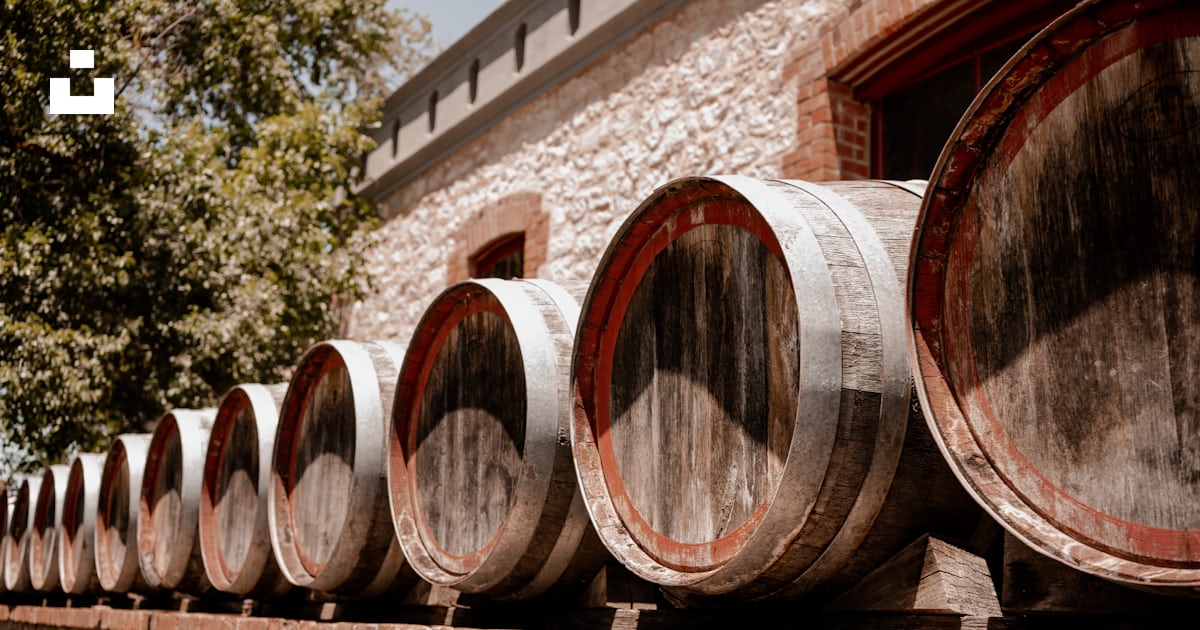Wineries Near Sonoma Square - Best Vineyard Visits In Sonoma
Wineries Featuring Vineyard Tours - Wineries Near Sebastopol For Tasting
Wine tasting is an art that requires practice and an understanding of varied features concerned in the process. One crucial factor of wine tasting is the development and interpretation of tasting notes, which function a guide for each novices and seasoned connoisseurs. A Guide To Understanding Winery Wine Tasting Notes can improve your wine-tasting experience, making it extra significant and gratifying.

Tasting notes are concise descriptions that capture the essence of a wine’s flavors, aromas, and general character. Normally composed by professional tasters, winery tasting notes supply insights into the nuances of assorted wines. They may help wine enthusiasts understand what to anticipate from a particular bottle. Nevertheless, tasting notes can vary extensively in style and element primarily based on the writer's experience and palate.
Wineries With Outdoor Seating - Sebastopol Area Wine Tasting
When you first strategy a glass of wine, your senses will begin to engage instantly. The sight, odor, and style of the wine will converge to offer you a complete experience. Tasting notes typically begin with the visible assessment, the place the color of the wine is taken into account. Shade performs a big role in indicating the wine’s age, grape selection, and even its flavor profile.
After assessing the visible facet, the following step includes swirling the wine within the glass. This motion aerates the wine, permitting its aromas to awaken. Smelling the wine offers important insight into its complexity. The preliminary sniff can deliver a flood of scents that will include fruity, floral, natural, or earthy notes. This is usually probably the most subjective part of tasting, as individual experiences can dramatically differ.
In winery tasting notes, descriptors are often categorized into major, secondary, and tertiary aromas. Primary aromas usually stem from the grape variety, secondary aromas derive from fermentation processes, and tertiary aromas come up from aging. Understanding these categories might help you recognize the depth of a wine, and so they also provide the vocabulary to express your experience higher.
Wineries With A Focus On Syrah - Best Winery Located In Sonoma
Following the olfactory encounter, your focus will shift to the style of the wine. This is where the primary characteristics—sweetness, acidity, tannins, alcohol—come into play. Tasting notes usually detail these flavors in multiple dimensions, together with the preliminary attack in your palate to the lingering finish on your tongue. A high-quality wine will present a harmonious balance between these factors.
While tasting, it's essential to ponder the physique of the wine, which may be described as light, medium, or full. The physique contributes significantly to your total impression, helping you think about how the wine pairs with food or whether or not it stands alone as a sipping wine. Balancing the body with the other traits will present you with a fuller understanding of what the wine has to offer.
The end of the wine, also known as the aftertaste, is another important aspect usually included in tasting notes. A long, nice finish normally indicates the next high quality wine, while a brief or cloying aftertaste may suggest otherwise. Evaluating the end can supply further perception into the wine's complexity and distinction.
Understanding the context of winery tasting notes can additionally be useful. Tasting notes can provide contextual details about the vineyard's location, local weather, and grape-growing practices. This context adds another layer of appreciation for the wine, permitting enthusiasts to connect the sensory experience with its origins, thus enhancing the enjoyment further.
Wineries Renowned For Cabernet Sauvignon In Sonoma - Exploring The Vineyards Of Sonoma
Many wineries present tasting notes on their web sites or labels, typically written in an approachable yet informative style. However, not all winery tasting notes are created equal. Some may be overly technical, whereas others may prioritize advertising aptitude over insightful analysis. Studying to navigate these notes can arm you with the knowledge to make informed selections when deciding on wines.
Collaborating in tastings at wineries can also deepen your understanding of wine tasting notes. Interacting with knowledgeable staff can provide you a more hands-on strategy to exploring different wines and the language used to describe them. Local Favorite Wineries In Sonoma. You'll have the chance to ask questions, have interaction in discussions, and doubtlessly refine your palate in actual time.
Experimentation is important for mastering wine tasting notes. As you sample different wines, strive making your own notes. Focus on describing the wine’s color, aroma, style, and end. Over time, you’ll develop a private vocabulary that resonates along with your sensory experiences. click to read more Every note you create will help refine your palate, allowing you to appreciate wines at a deeper degree.
Wineries With Beautiful Architecture - Wineries In The Sebastopol Region
In conclusion, a Guide To Understanding Winery Wine Tasting Notes presents a comprehensive framework for diving into the world of wines. It equips you with the strategies and language necessary to articulate your experiences. Whether you are a casual drinker or a dedicated aficionado, understanding and using tasting notes can profoundly impression your wine journey. This data not solely enhances your enjoyment but also connects you deeply with the rich narratives each bottle tells. By embracing this journey, you turn out to be a part of the gorgeous mosaic of wine tradition, the place each sip unveils a new story ready to be discovered.
- Wine tasting notes typically encompass a big selection of sensory descriptions, including aroma, flavor, acidity, physique, and end, allowing tasters to totally recognize the wine's traits.
- To improve your understanding, familiarize your self with common wine terminology corresponding to "tannins," "oakiness," or "terroir," which might help decipher the notes more effectively.
- A systematic strategy to tasting entails first visually assessing the wine's colour and clarity, adopted by swirling to launch aromas, then inhaling and describing what you experience.
- Taking notes during tasting may help determine patterns over time, improving your palate and making it simpler to recall preferences for future selections.
- Do Not overlook the affect of food pairings; tasting notes can differ significantly when a wine is enjoyed with complementary flavors, altering notion and pleasure.
- Pay consideration to the wine’s vintage, as weather conditions in a given year can considerably affect the final product, adding one other layer to the tasting notes.
- Contemplate the winemaker's style and philosophy, which may shape the wine's profile and impression how its notes evolve with every sip.
- Training with different grape varieties can broaden your vocabulary; every sort brings unique traits that can improve your capability to articulate tasting notes effectively.
- Engaging with wine professionals or attending tasting events can present useful insights, providing a richer context for understanding personal tasting notes.
- Keep In Mind that tasting is subjective; individual preferences and experiences will form one’s interpretation of the same wine, enriching the general enjoyment of wine exploration.
What are wine tasting notes?
Wine tasting notes are descriptive feedback made by tasters in regards to the appearance, aroma, taste, and finish of a wine. They provide an outline of the wine's characteristics and might help consumers perceive the style and high quality of the wine.
Wineries Offering Virtual Wine Tastings - Wineries Near Sebastopol For Tasting
Why are tasting notes essential when choosing wine?
Tasting notes can guide you in choosing a wine that fits your palate. They provide insights into flavors and aromas, helping you to match wines with food or occasions. Understanding these notes enhances your total wine experience.
How should I read wine tasting notes?
(Wineries Renowned For Cabernet Sauvignon In Sonoma)
Popular Wineries With Outdoor Seating In Sonoma - Greatest Wine Tasting Locations In Sonoma

When studying wine tasting notes, pay attention to the construction: look for descriptions of shade, aroma, flavor, and finish. This will help you grasp the wine's profile and determine if it aligns with your preferences.
What terms generally appear in wine tasting notes?
Widespread phrases embody "tannin" (the structure), "acidity" (the crispness), "physique" (the weight), and various flavor descriptors like "fruity," "earthy," or "spicy." Familiarizing your self with these phrases can deepen your understanding of wine.
Wineries With Sustainable Practices - Wineries To Visit

Can I create my own tasting notes?
Yes! Writing your own tasting notes can enhance your wine tasting experience. Focus on your observations of taste, aroma, and other sensory traits. This personal practice may help you refine your palate over time.
How do I establish the aromas in wine tasting notes?
Family Friendly Wineries With Outdoor Spaces - Vineyard Visits And Wine Tasting In Sonoma
To determine aromas, practice smelling a selection of scents and associating them with wines. Swirl the wine in your glass to release its aromas, then take a second to breathe in deeply earlier than figuring out any distinguished scents.
What is the distinction between professional and personal wine tasting notes?
Professional tasting notes might use extra technical language and specific website here terminology, whereas personal tasting notes are subjective and reflect particular person experiences. Each are useful for understanding and having fun with wine, but personal notes might resonate extra with your distinctive tastes.
How can tasting notes improve my wine appreciation?
Wineries Known For Handcrafted Wines - Best Vineyard In Sonoma
Tasting notes can enhance your appreciation by helping you to understand and articulate the complexities of wine. They encourage mindful tasting and provide a framework for comparing different wines, leading to a richer enjoyment of the beverage.
Are there any apps or instruments to assist with wine tasting notes?
Sure, there are a quantity of apps designed to assist customers document and arrange their tasting notes. These tools often offer features like flavor wheel guides and wine database searches, making it simpler to trace your journey by way of completely different wines.